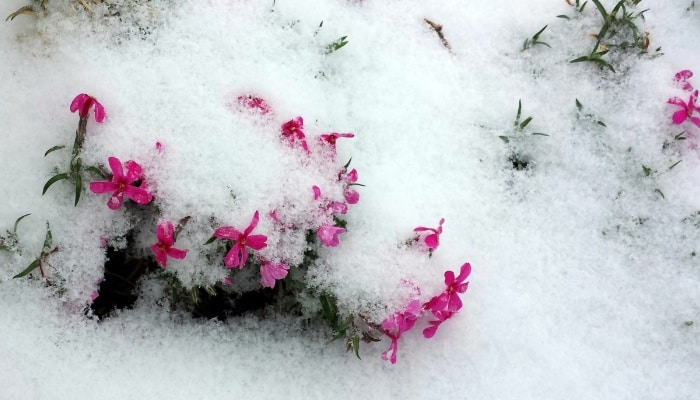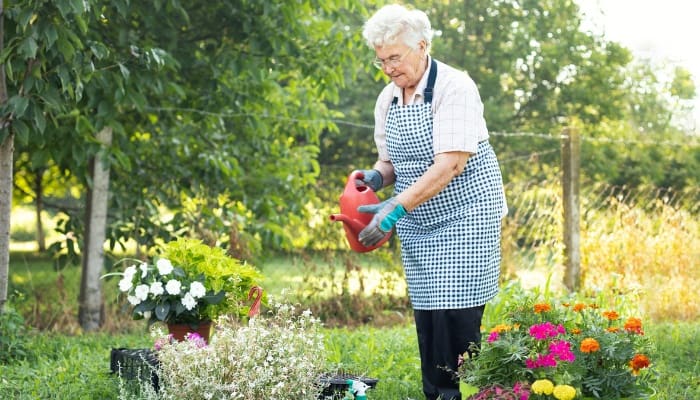When you come across a flourishing section of phlox in your garden, it’s a beautiful sight. However, there are instances where the leaves may start turning brown and perishing.
While it is easy to grow and doesn’t require much to thrive, it can be affected by its environment causing stress that eventually leads to its death.
Why did my phlox die? Phlox plants may die if they aren’t watered appropriately or if they lack adequate nutrients and lighting. Phlox may also die if it catches a disease, is being damaged by pests, does not have enough space to grow, or is accidentally harmed by herbicides or other chemicals.
There are a few varieties of phlox, and all of them can be affected by the same issues.
Continue reading to understand the 9 main factors that lead to plant health declining, its winter dormancy period, and how to revive it!
9 Causes of Phlox Plant Death
Phlox is easy to grow, but sometimes pests, diseases, or environmental stressors get the best of it. See the list below to better understand the 9 most common issues that may kill your phlox.
1. Too Much Water
Oversaturation of the soil will lead to anoxic conditions (not supplying adequate oxygen the roots need to survive).
Allow the soil to dry out in between waterings, and always aim to water only the soil and not the foliage to prevent the disease from forming.
2. Not Enough Water
Phlox should always be kept in slightly moist soil, so if your phlox looks wilted or its leaves begin to drop, it most likely needs more water.
Always check the moisture level before watering, and aim to water your phlox with 1-2 inches of water per week.
3. Lack of Nutrients
If your phlox is growing smaller than usual, has yellowing leaves, or isn’t producing flowers, it most likely needs a boost of nutrients!
Add a well-balanced slow-release fertilizer (I recommend this one) annually shortly after it blooms to keep your plants healthy.
4. Improper Lighting
The majority of phlox varieties require 6 to 8 hours of direct sunlight per day.
Plant your phlox in an area that receives ample sunlight, or increase sunlight by pruning back nearby plants to allow for more direct light. If it doesn’t receive sunlight, it can’t produce energy to live!
5. Disease
Diseases are common among phlox varieties when they are planted in close proximity to one another or in an area with poor airflow.
They can be tricky to eliminate, so if you see one of those listed below, take action quickly!
Blight
Blight is caused by soil-borne viruses that infect leaf cells when it comes into contact with the foliage. It will appear as brown spots with yellowing leaves that begin at the leaf edges, spreading inward.
Tobacco Mosaic Virus
The Tobacco Mosaic virus will show itself by causing the plant to grow distorted leaves with chlorosis-color symptoms like yellowing and spotted leaves.
Impatiens Necrotic Spot Virus
This virus has symptoms that resemble both Tobacco Mosiac and Blight viral infections, showing its effects through distorted, yellowing leaves with brown and white holes appearing on the leaf surface.
Aster Yellows
This virus is shown through distorted leaves and flowers. In most cases, it will cause the plant to grow in a bushy habit and not reach its full mature size. It will also cause pale veins and yellowing leaves.
6. Pests
Pests can get the best of your phlox, especially phlox closely planted among each other. See the list below for the most common pests:
Phlox Bug
The Hemiptera beetle (Lopidea davisi) is reddish-orange and black and is called the phlox bug because its main food source is phlox and it can cause serious damage to plants.
Spider Mites
Tetranychus urticae or the two-spotted spider mite is a serious threat to phlox. Part of the arachnid family, they will spin a thin webbing to coat your plant’s leaves, reducing the plant’s ability to photosynthesize and feeding on the plant’s nutrients.
Aphids
Aphids multiply rapidly and will feed on the plant’s nutrients causing health decline. They will overtake a plant and prevent it from growing any further, eventually killing it.
7. Chemical Drift
Unfortunately, sometimes spraying an herbicide nearby may cause the wind to carry the particulates further from the area they were intended to reach.
Spray herbicides on a non-windy day or cover any plants nearby to ensure they won’t be negatively affected.
8. Overcrowding
Plants need ample space above and below the soil so their leaves can absorb sunlight and their roots can absorb nutrients and water.
Plant phlox plants a minimum of 12 to 18 inches apart to allow them space to grow.
9. Soil Acidity Issue
Phlox prefers soils with a pH of 5.5 to 7.5. Anything out of this range will stress the plant, and it may not be able to live.
Test your soil pH (this tester also checks for moisture, light, and nutrient levels), and add crushed dolomite to raise the pH to an acceptable level if necessary.
Understanding Phlox Winter Dormancy

Most phlox varieties will die off in the winter, go into dormancy, and regrow the following spring.
You’ll notice that as the temperatures begin to drop and the daylight hours are reduced, your phlox will lose its vigor.
Its leaves will turn yellow and then brown before dying back. Its blooms will drop, and the plant may begin to droop overall as it prepares itself for winter.
After the first snowfall, it will know it is the end of the season and die back completely.
For creeping phlox in warm climates, the plant may not go entirely dormant during the winter. You may notice that growth slows, but generally, the plant will remain evergreen unless you have a severe winter.
Garden Phlox Winter Care
It is best to cut the tall shoots down once they begin to enter dormancy. This will help healthy new shoots grow the following season.
It can be beneficial to add mulch or burlap over the root ball to help regulate temperature fluctuations.
Creeping Phlox Winter Care
Creeping phlox will often die back and can be cut down for winter, but this is not a necessary chore.
Winter is a great time to remove any weeds that may be growing in the patch so they do not grow again next season. Add mulch to protect the shallow roots from freezing temperatures.
Creeping Phlox Looks Dead
Creeping phlox will look dead once it goes into dormancy, but it may also show signs of dieback if its roots have been disturbed, it isn’t receiving enough water, or it has been affected by an herbicide.
Cut back the dead portions, and begin watering the plant if the soil is dry. It should begin to grow again from its roots, or another nearby plant will fill in its place.
How Do You Revive a Dying Phlox?
Revive your dying phlox by pinpointing what issue or issues may be affecting it. Treat any pests with neem oil or insecticidal soap, and remove any affected portions to prevent them from spreading.
With some careful diagnosis and TLC, you should have new shoots sprouting up in no time!
Related Questions:
Why Are My Phlox Leaves Turning Yellow?
Your phlox leaves may be turning yellow due to a lack of nutrients, viruses, powdery mildew, or pests like spider mites.
Overwatering is also a common cause that can lead to viral disease or root rot, in turn affecting the healthy leaves and turning them yellow.
Does Garden Phlox Come Back Every Year?
Yes! Phlox is a perennial that will remain green throughout spring and summer into fall, only dying back in the late fall and winter.
Conclusion
Phlox may show signs of dying like any other plant. The first thing to look at is the season because it may just be entering dormancy.
However, if it is still early in the growing season, it is most likely one of the other 9 possible causes listed above.

